How To Prevent Cracks In Cheesecake
I’m here to show you how to prevent cracks in cheesecake! Holiday baking is right around the corner, and cheesecake is a very popular dessert during the holidays. Do you bake a delicious creamy cheesecake, but end up frustrated because it cracks on top? Allow me to show you the tips and tricks for fixing this problem!
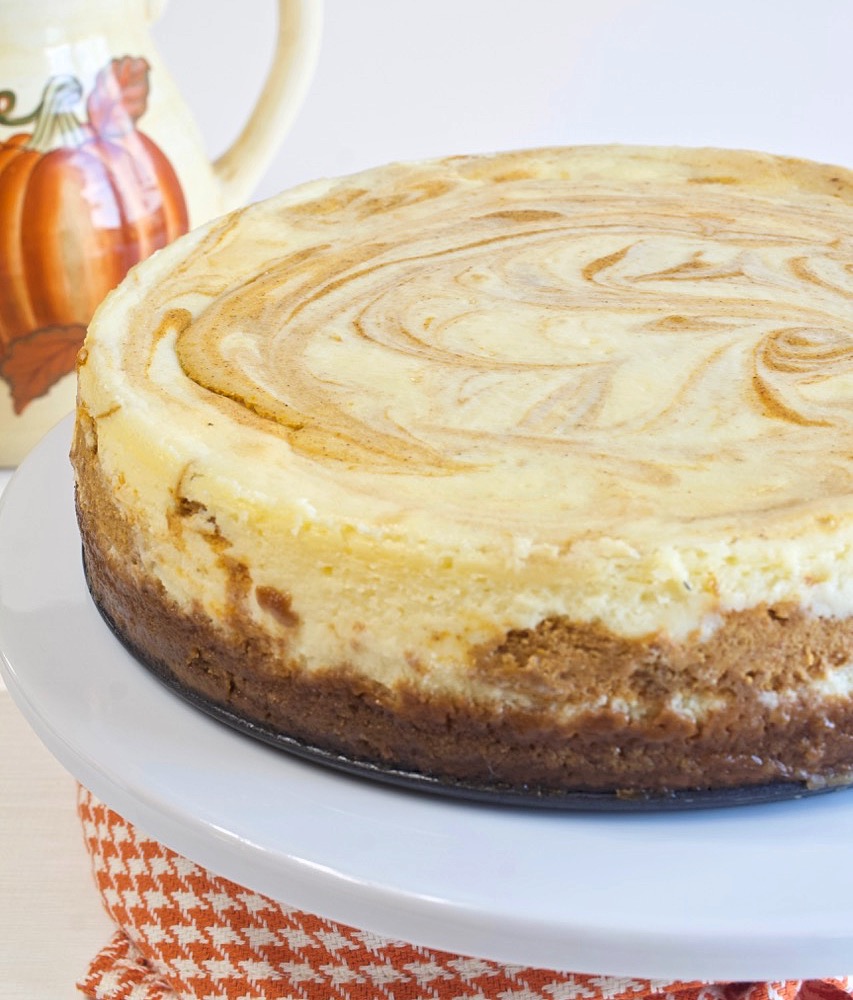
I don’t know about you, but cheesecake always makes an appearance on my dessert table during the holidays. The flavor and type might change for each holiday but there is always cheesecake. Don’t get me wrong, a cheesecake with cracks can taste just as delicious as cheesecake without cracks, but after working so hard to make a delicious cheesecake, you probably want to show it off. Right? I don’t blame you, I’m the same way, especially during the holidays when I want to impress my guests.
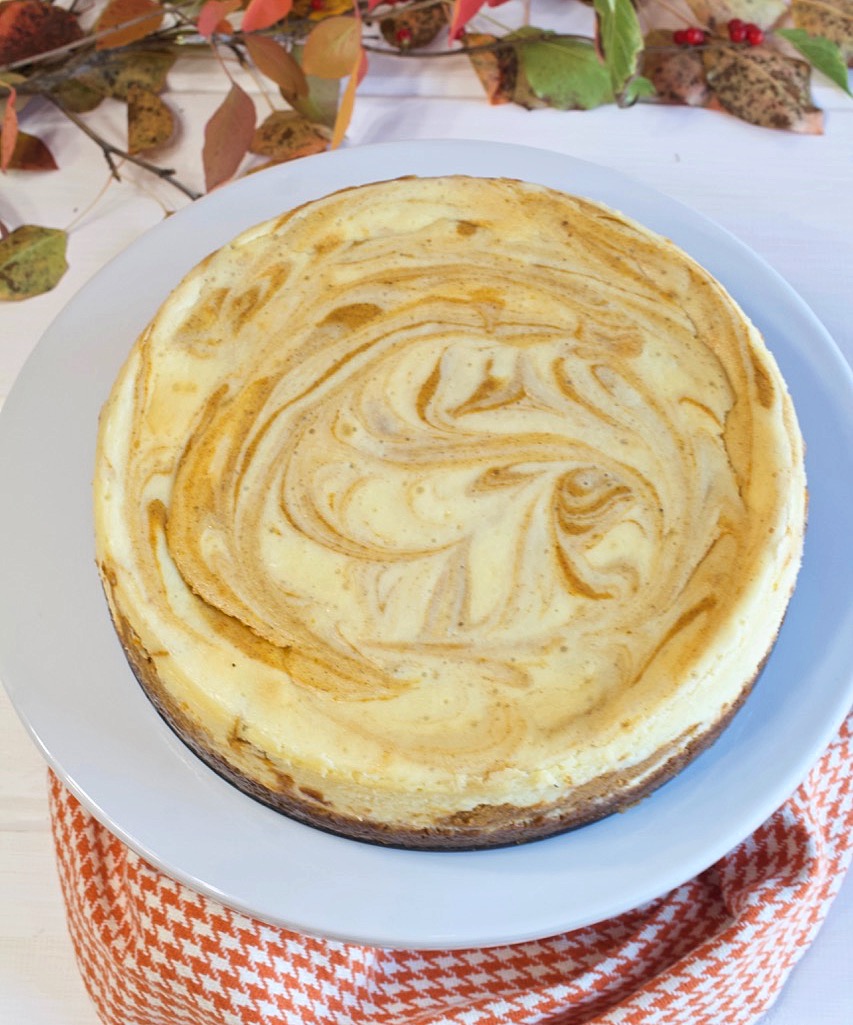
How to prevent cracks in cheesecake is easier than you might think!
What’s the secret in preventing cracks in cheesecake? I have a few easy tips and tricks to share with you, but my #1 tip is to use a water bath!
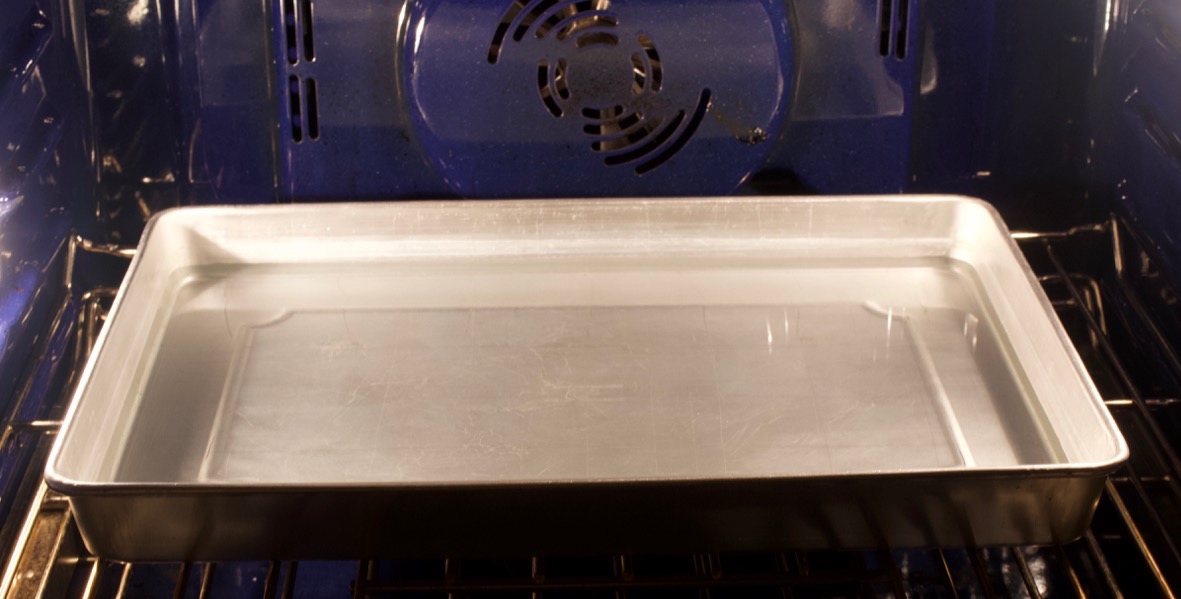
BAKING CHEESECAKE IN A WATER BATH or Bain-Marie
What is a water bath?
A water bath is simply a pan of hot water that’s placed in a hot oven to produce steam for a moist baking environment. Water baths are used for cheesecakes and custard type fillings that are egg heavy and get baked in an oven.
What’s THE PURPOSE of a water bath?
- Cheesecakes love a humid baking environment. A water bath creates moisture in an otherwise dry oven.
- Cheesecake batter is heavy from eggs, and eggs need a humid environment to keep them from drying out.
- Cheesecakes need to rise slowly and evenly, so they don’t crack on top, and the steam from the hot water helps them to do just that.
- A perfectly baked cheesecake should not brown on top. The water bath ensures that the cheesecake will bake evenly, and the top will not brown before the rest of the cheesecake is done.
HOW TO BAKE A CHEESECAKE IN A WATER BATH
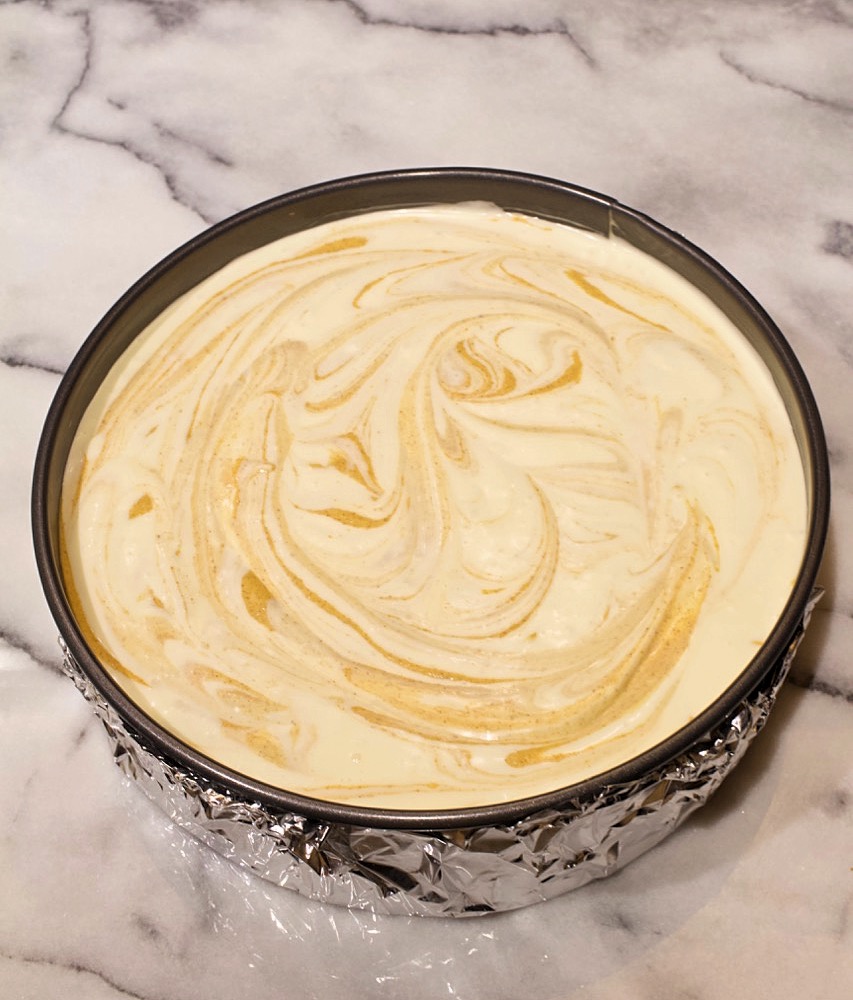
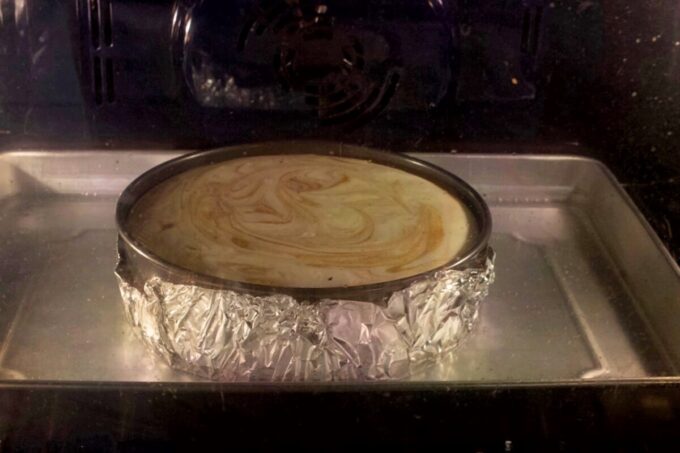
- Use a springform pan. Prepare your favorite crust recipe and press it into the pan.
- Wrap the pan securely with heavy-duty foil, making sure it comes at least two thirds up the outside of the pan. Make sure there are no holes in the foil. You can use a double layer of foil if you’re worried about it leaking.
- Pour the batter into the pan.
- Place a large pan, (much larger than the springform pan) in a preheated oven. I use a half sheet cake pan, but you can also use a roasting pan, or any pan that is at least 2 inches deep and quite a bit bigger than the springform pan. NOTE: If you don’t have a pan big enough to hold the cheesecake, place a pan of water on the lowest oven rack, and place the cheesecake on the rack above it. The steam from the water will still do its work.
- Fill the pan with about 1 1/2 inches of boiling hot water.
- Gently transfer the springform pan to the water bath.
- Bake the cheesecake!
As you can see in the picture above, this cheesecake is done. The water pan started out with 1 1/2 inches of water and now it’s down to about 1/4 inch of water. That means there was a lot of steam produced during the baking time.
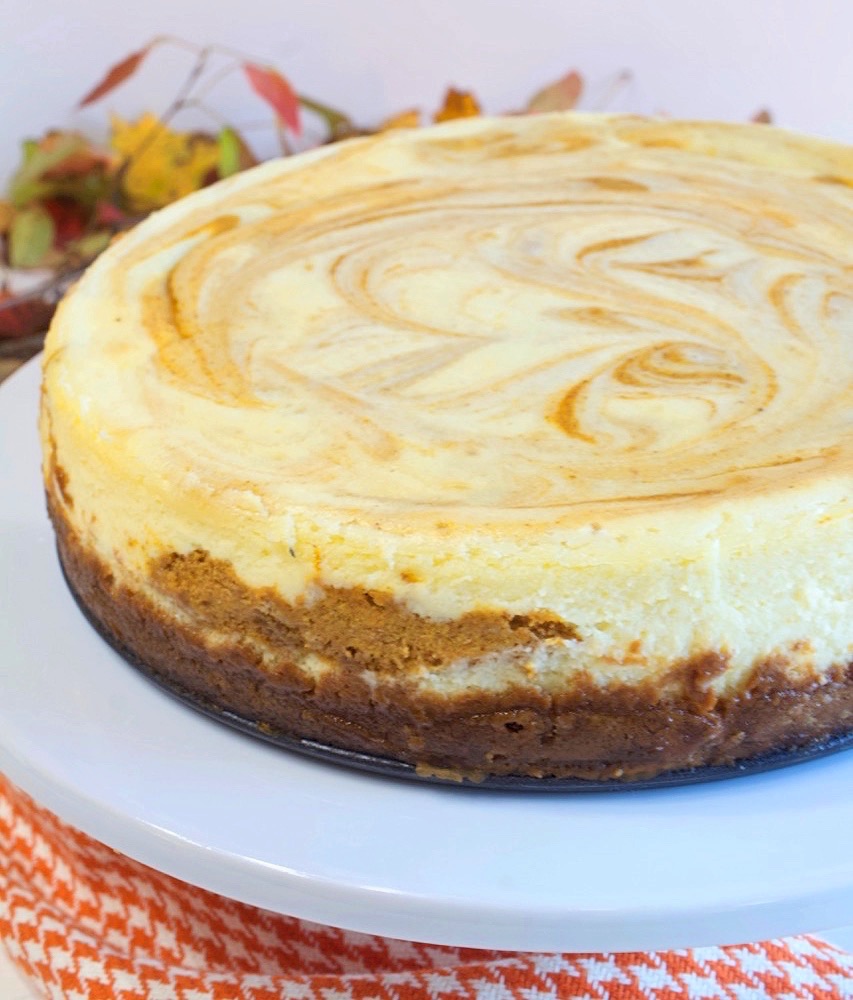
MORE TIPS ON HOW TO PREVENT CRACKS IN CHEESECAKE
- Bake the cheesecake at a low temperature of 325 to 350 degrees, no higher.
- Bake the cheesecake on the lowest oven rack
- Don’t over bake the cheesecake. Over baking a cheesecake will also cause cracks. Bake the cheesecake until the edges are firm, but the center is still slightly jiggly. The cheesecake should not brown on top. If it starts to have slight brown spots, turn off the oven.
- Cool the cheesecake slowly! Once the cheesecake is baked, turn off the oven and open the oven door, leaving it slightly ajar. Allow the cheesecake to cool in the oven for 1 hour before removing it.
- Recipe ingredients! Check your recipe! A good cheesecake should be moist and creamy, not dry. Don’t use simply eggs and cream cheese in your cheesecake. A good cheesecake recipe should have something besides cream cheese…something such as sour cream or heavy cream, for added creaminess and moisture. I love to use sour cream for a bit of tang and added moisture. If you use cream cheese and eggs and nothing else, your cheesecake will be dry and will probably have several cracks on top.

Now that you know how to prevent cracks in cheesecake, go try your hand at baking a perfect cheesecake before the holidays get here!
Check out these cheesecake recipes…
Coconut White Chocolate Cheesecake
No-Bake Red White & Blue Cheesecake
Cranberry White Chocolate Mousse Cheesecake

